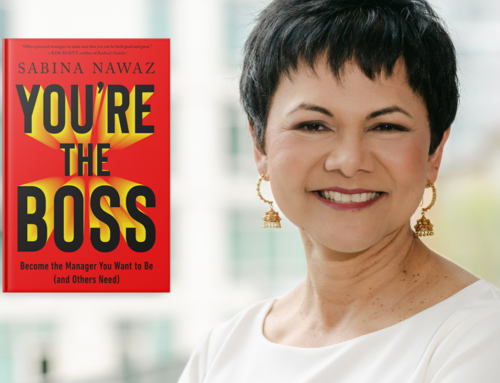During the pandemic, I worked with mid-level executives across a variety of industries who had to navigate a particularly difficult form of communication in a new way: presenting to the executive team via Zoom. Now that the trend is clearly toward being back in the office, at least a few days a week, those same executives have to get used to presenting in person again.
It’s surprisingly stressful. Many of these mid-level folks found that they liked having their bosses on the other end of a computer screen. In a way, the screen had a democratizing effect. Reduced to a tiny two-dimensional square, the CEO suddenly seemed less intimidating. And while presenting on Zoom certainly brought with it many challenges, everyone was in the same lockdown boat, and that had a unifying effect in many companies.
But now the managers are managing in person once again and when the CEO is also in town, that typically means tackling him or her face to face. Many of these mid-level folks report feeling newly uncomfortable, having gotten out of practice for face-to-face meetings. Following is the first of a three-part primer on how to present to the executive team in person once again. In this first part, I’ll take on the issue of reading body language. In the second, how to keep the executives’ attention. And in the third, how to show up with oodles of executive presence.
So, what is that CEO thinking as you launch into your carefully prepared presentation, the one you’ve spent weeks preparing, and upon which the future of your team’s funding may depend? And what are the rest of those slightly distracted-looking folks deciding to do as you go on – support you or throw you to the wolves? Specific knowledge of the players is vital, because body language has infinite individual variations, but here are four general questions you can ask yourself to help you get back in the game.
First, is the body language open or closed? Are the arms unfolded or crossed? Are the hands opened or clenched in fists? Is the face open, with eyebrows up, eyes wide, nodding and smiling – or the reverse? Is the executive in question turned toward you or away from you? Are the hands visible or below the table? These are often signs of degrees of openness.
Second, is the body language engaged or disengaged? People who are engaged in discussions tend to find ways to move closer to one another. The opposite movement can mean disengagement. If an executive leans back and puts his/her hands behind his/her head, that can be a strong sign of tuning or checking out. It can also mean that the top person is turning the conversation over to his/her underlings.
Third, is the body language allied or opposed? People who are allied in opinion or loyalty tend to adopt the same body position in conversation. Look for the person who moves at the same time you do, ending up in a similar position. And look also for the executive who moves at the same time as you, but in an opposite way. That one is probably not going to support you.
Fourth, is the body language committed or uncommitted? The sum of the other three add up to commitment. If you’ve seen signs of openness, engagement, and allied behavior, you may be about to get the green light. Evidence to the contrary indicates reservations, and it may be a good idea to try to explore the areas of resistance in order to deal with them verbally.
Always remember that body language is multi-determined; crossed arms can mean defensiveness or simply that the person is uncomfortable in the A/C. Always consider the person and the context to evaluate nonverbal communication effectively and accurately.









Leave A Comment